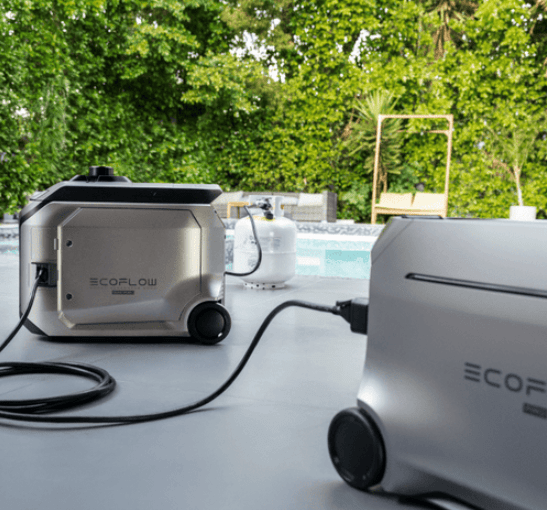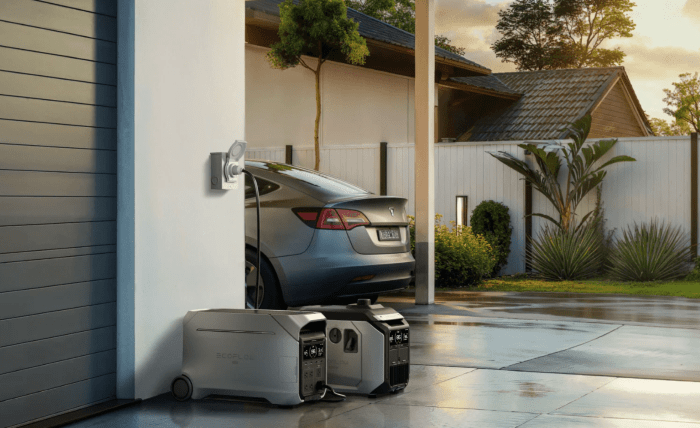With the cost of fuel rising and environmental issues top of mind, homeowners and nature lovers alike are forced to consider their options when it comes to backup power. The decision between inverter generator and conventional generators is becoming more important with energy insecurity. They simply use the same old stodgy style generator instead, which may use up an unnecessary amount of fuel, hence generating lots of emissions. Inverter technology, on the other hand, is believed to produce superior performance with less damage to the environment. For those who are environmentally minded and looking for sustainable ways to power their homes, it’s vital to know the differences between these technologies. This ultimate comparison guide discusses what sets the conventional and inverter generators apart in terms of fuel consumption, carbon footprint, and projected savings over time. Whether you’re prepping for emergency outages or exploring the great outdoors, we’ll offer straightforward, actionable advice you can trust, so that you can choose the power option that’s right for you and the planet.
Generator Fundamentals: Core Differences Explained
Conventional vs. Inverter Generator: These inverter generators and conventional generators work in fundamentally different ways, which have a significant impact on their fuel economy. Standard generators generate power in a crude mechanical manner—the motor operates at a fixed speed (3600+ RPM) reacting to varying power demands, following a simple electrical equation of power in equal power out. That one-size-fits-all straightjacket means oversupplying at partial loads, supplying unstable power, and bunkering fuel at other times. On the other hand, inverter generators utilize advanced electronics to produce DC power and invert the raw electric charge to clean AC power through processor-controlled electronics. This double conversion results in a pure sine wave output that is just as good as utility power. The inverter has the biggest advantage of all: the ability to control the speed of the engine, and then, through the real-time load demand, achieve the purpose of significant fuel saving and reduce noise. Inverter models have a normal THD of less than 3%, but a standard generator can have a THD rating of up to 25%! When combined with variable speed capability, this consistent power output from inverter generators provides a more technologically advanced and superior way of producing power for today’s power requirements.

The Fuel Efficiency Showdown: Consumption Compared
Testing Methodology: Measuring Real-World Generator Fuel Consumption
To get at real-world fuel usage, it needs to be tested with a standard procedure. Mike’s industry standard load testing shows that inverter generators outperform traditional generators in every type of use. At 25% load, which is about what you need for power during the night, an inverter generator burns about 0.25 gallons per hour, while a traditional generator burns about 0.4. Medium loads at 50 percent capacity that are common during regular daytime use reveal inverter models using 0.45 gallons per hour compared to 0.7 gallons for traditional generators. Under heavy load at 75% capacity, the differences widen, with inverters using 0.7 gallons per hour compared to nearly 1.1 gallons on traditional generators.

Why Inverters Win: The Science of Adaptive Engine Speeds
Inverter generators’ advantage over conventional models is due to their advanced throttle response. Inverter models are completely different from conventional generators, which just throttle the engine up and down to suit power requirements, sacrificing fuel economy and raising noise levels. Think of your typical weekend camping trip: The power pull is low while you’re brewing your morning coffee and lighting up in the evening. An inverter generator cuts back to, say, 2000 rpm, while the normal one keeps chugging along at its full 3600 rpm, wasting gas. While in an air-conditioning or microwave cooking operation, the inverter unit operates only at the necessary power level, which means greater energy savings. This real-time modulation capability can cut fuel consumption by as much as 40% on a standard 48-hour camping trip, resulting in noticeable cost savings and increased cook time per fuel canister.
Eco-Impact Analysis: Beyond Fuel Savings
The eco-friendliness of inverter generators is not limited to fuel efficiency alone. When we burn a gallon of gasoline, we form roughly 20 pounds of CO2—so, fuel reduction is a straight line towards reducing the carbon footprint. The inverter generators generally save 30-40% of fuel over the life of the unit. For a standard generator operating eight hours a day for emergency backup duty, the generator would generate 80 pounds of CO2—an inverter unit just 96 pounds for the same power output. The ecological benefit increases with less noise pollution, since inverter models run at 50 to 60 decibels and traditional generators run at 70 to 80 decibels. This silent operation allows campers to sleep comfortably without worrying about wildlife and camping or home animals. Market leaders such as EcoFlow have long led the way with pre-wired solar input ports, empowering hybrid solar operation when combined with foldable solar panels. This renewable energy capability paves the way to sustainable and even more environmentally friendly power generation: users can complement generator power with solar and save up to an additional 25% in fuel, proportional to solar power input.
Power Capacity & Expandability: Meeting Real Needs
Matching Generator Size to Application
The correct choice of generator size is a complex question as power needs consideration is needed. Basic appliances such as fridges usually require 600-800 watts running and over 2000 watts starting, and air conditioners require 1000-1500 watts running and up to 3000 watts starting. The latest inverter generators are very effective in addressing these surges with the help of some very smart control circuits, which means you don’t have to oversize your generator. When considering aggregate requirements, do not just total the maximum possible loads; rather, consider how they will be used simultaneously. A 3000-watt inverter generator should be able to trigger a fridge, lights, and small appliances at the same time frame, which is a real-world working capacity for a 4000-watt traditional product.
Future-Proofing Through Expandable Storage
There are few inverter-type generators with expandability options which you will see below. Many high-quality inverters include parallel connection ports available for this feature (check description for details). The difference between inverter and inverter generators: Inverter generators are a smaller-sized portable on-off grid or off-grid device that means they do not have to be networked to a parallel with, similar in nature. This modular design allows for a small and effective unit for basic requirements, and the addition of capacity as necessary. Many of them also have DC outputs and “smart” charging ports for use with external battery banks. Such integration enables hybrid power systems, such as, for example, wherein a generator recharges or reenergizes a rechargeable power source during demand peak power periods, while a stored power source is used to handle lighter loads. This kind of flexibility means your power solution not only meets your needs, but it also grows with them, so you don’t have to worry about obsolescence or low performance as new or higher demands come in.
Optimization Strategies: Maximizing Efficiency
Here are two quick and easy ways to determine the amount of power your generator will need to be derated/load. That way, you can be sure to get the right generator to meet your needs. Set usage times and preference essential devices during high efficiency periods so high draw appliances are not started at the same time. Try using a staggered load start running power-hungry items like A/C units and power tools during the day when the sun makes it easier on the engine and storing light load, LED lighting, phone charging, etc. to the end of the day. Keep it running at peak performance with open maintenance, including cleaning and replacement of air filters during mowing season and changing the oil and spark plug after each season. Synthetic oil provides superior high-temperature lubrication and reduced friction for increased fuel economy. Add fuel stabilizer or stabilizer/conditioner when you fill the tank, putting in 1 ounce per 2.5 gallons to prevent formation of carburetor deposits and help keep the engine starting easily. Keep generators in climate-controlled areas when you can, and run them once a month under load to avoid problems with the fuel system. For inverter generators, you should turn on the eco mode if the steady-state load is less than 25% of its total capacity for the best fuel economy, but you need the eco switch off when you run motor-driven appliances that need surge power.
Buyer’s Action Plan: Choosing Your Ideal Generator
Picking the perfect generator depends on your particular power needs and use situation. For the casual user such as campers and RVers outdoors: portable inverter models under 3000W with parallel availability – better fuel efficiency for weekend trips and you have some room to grow. Emergency backup users will want a 4000-7000-watt inverter generator with electric start and automatic voltage regulation to save major home appliances during long outages. If you want a professional or industrial option that is designed for continuous use, then look at one of the commercial-grade inverter models that include monitoring and are dual-fuel capable. When comparing units, make sure the total harmonic distortion (THD) is less than 3% for electronics safety, and look for an eco-mode feature for maximum fuel savings. Key features include an electric start, fuel gauge, low-oil shutdown, and numerous outlets, including USB ports. Although inverter generators are usually 20-30% more expensive to purchase, the extra costs in fuel are regained in as little as 500-700 hours of run time under normal use. It takes many days of camping to reach the break-even point, between two camping seasons for a weekend camper using around 2-3 gallons per trip! Users who have the solar generator systems as emergency backup will enjoy payback even sooner, some seeing returns as quickly as 3-4 long-term power outages, while professional users have the potential to recoup the price difference in as little as three months of daily operation.
The Future of Sustainable Portable Power
The evidence clearly demonstrates that inverter generators represent the future of portable power generation, offering substantial fuel savings through advanced speed control technology. By consuming up to 40% less fuel than conventional generators, these units significantly reduce both operating costs and environmental impact. The sophisticated power management capabilities not only protect sensitive electronics but create a natural bridge to renewable energy integration through pre-wired solar compatibility. When properly sized and maintained using the optimization strategies outlined above, inverter generators deliver reliable power while minimizing resource consumption. The initial investment in inverter technology typically pays for itself within the first year of regular use through reduced fuel costs alone, while simultaneously decreasing carbon emissions and noise pollution. Take the next step toward sustainable power generation by calculating your specific power requirements and potential fuel savings—multiply your current generator’s hourly fuel consumption by typical usage patterns, then compare with inverter specifications to reveal your personal savings opportunity. The transition to more efficient power generation starts with informed choices about the technology we employ today.

